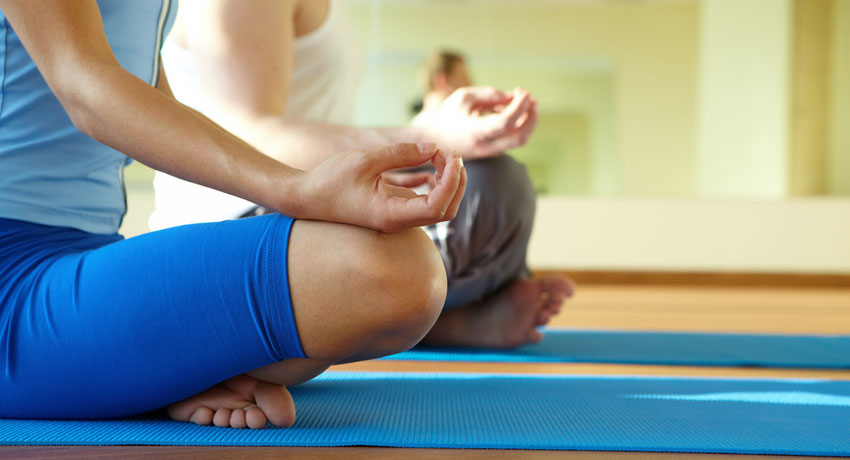Studying The Power Of Yoga

Yoga meditation image via shutterstock
While Bikram yoga has received some attention recently in the medical world, sweating through 90 minutes of intense poses is not for everyone. Dr. Chris Streeter, associate professor of psychiatry and neurology at Boston University School of Medicine, is looking at the way yoga as a whole effects the brain—specifically the brain suffering from clinical depression.
Streeter has published previous studies about the physiological effects of yoga. In 2010, she conducted a study that was published in The Journal of Alternative and Complementary Medicine that examined the connection between yoga and anxiety. “That was a study of normal subjects,” Streeter says. “Those with no psychiatric illnesses who weren’t on any medication.”
Streeter and her colleagues found that after a yoga session, chemicals in the brain called gamma-aminobutyric acid, or GABA, were increased significantly. GABA chemicals are reduced in people with anxiety and depression and drugs that increase GABA levels—drugs like Prozac—are commonly prescribed to such patients.
Compared to walking, Streeter and her co-authors found that yoga increased GABA levels the most, contributing to the idea that yoga is best kind of healing exercise out there. Streeter’s study was one of the first studies to establish a connection between yoga and increased GABA levels. Now, three years later, Streeter is looking to go farther.
Her new study—which is currently recruiting subjects—is focusing less on anxiety disorders and more on depression. “This study is looking at people who have mild to moderate depression,” Streeter says. “They’re not suicidal and they’re not on any medication and they’ve indicated that they don’t want to be treated with conventional medication.”
Participants will be assigned either a low dose or a high dose of yoga: they will either take part in 90 minute yoga classes three times a week, with added at home yoga four times a week, or take part in two 90 minute sessions a week. Both doses include a twenty minute breathing exercise that is similar to meditation.
“People with too much stress have an overactive sympathetic nervous system,” Streeter says. “One of the reasons yoga is helpful, is that it stimulates the parasympathetic nervous system —the one that controls the variability of time between heart beats—and reduces stress.”
People with depression tend to have low heart rate variability and low GABA levels. The hypothesis of this study is that yoga, as it stimulates the parasympathetic nervous system, will raise both of these levels and improve patients’ moods.
Streeter cautions against thinking that yoga can replace conventional treatments for depression. “People who are really depressed probably need it,” she says. “But as an adjunct, I think it’s a really good idea.” It’s a possible treatment for people who are not depressed enough to be on medication in the first place, Streeter says, but for those that are, she recommends yoga as an additional facet of current treatments.
Streeter’s current study is looking for people who have been diagnosed with mild to moderate depression, have no suicidal ideation, and are not currently being medicated to participate. More information on how to volunteer can be found here.


